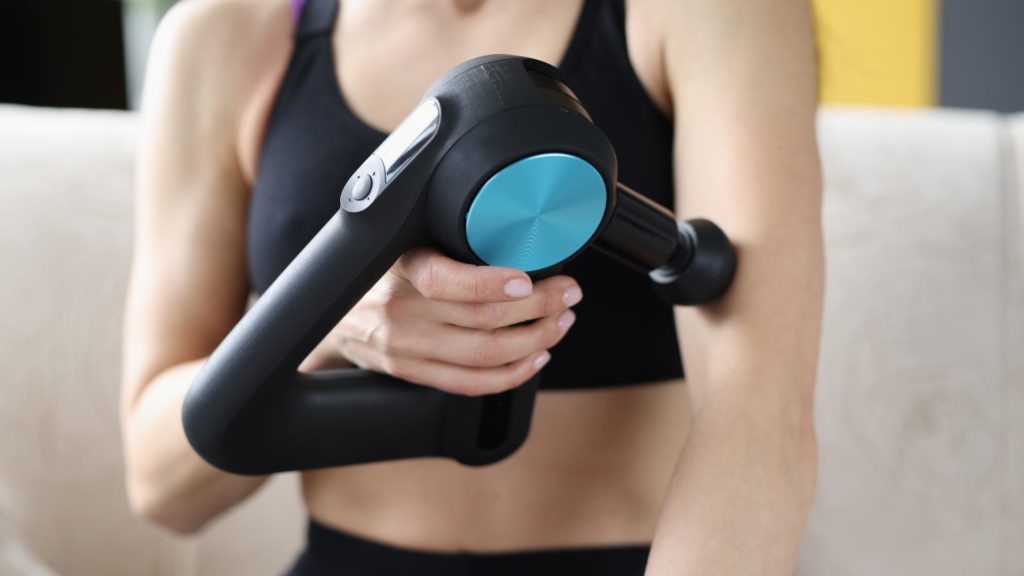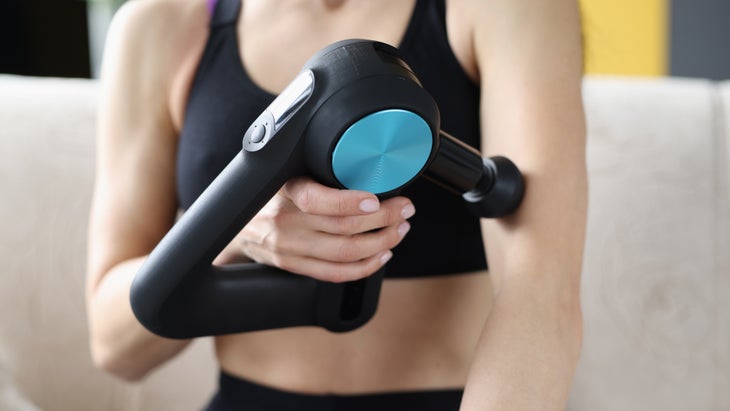
5 Tried-and-True Ways to Relieve Tight Muscles
Get full access to Outside Learn, our online education hub featuring in-depth fitness and nutrition courses and more than 2,000 instructional videos when you
sign up for Outside+.
Tight muscles are no fun, but happen to the best of us every now and then — especially after long days sitting stationary in a chair, hard-earned workouts or strenuous activity that’s caused our muscles to be overworked.
There are plenty of reasons why our muscles become tight and, most of the time, it’s an attempt to protect us from injury, explains Marvin Nixon, MS, NBC-HWC, CPT, certified nutrition consultant and health and wellness coach.
“When there is pain or inhibited range of motion in a joint, the brain and nervous system signal the muscle and mainly the fascia to throw on the brakes in order to protect the joints,” he says. “It is the tissues on each side of a joint locking down to prevent movement in the joint that causes the sensation of tightness, and the nervous system’s response to a reduced range of motion can be to reduce the range of motion even more.”
On the laundry list of causes related to tight muscles, the top contenders are overuse, injury and dehydration, according to Allen Conrad, DC, CSCS, owner of Montgomery County Chiropractic Center in North Wales, Pennsylvania. “Overuse of a certain muscle movement is your body’s way of saying that you need to slow down, as you develop stiffness and tightness resulting from a certain repetitive activity,” he says. “Injuries can also result in tight muscles, as your body does this to prevent you from using that muscle group while it is going through the healing process.”
Not drinking enough water, too, can prevent proper muscle function, which can give you the feeling of your muscles feeling tight.
If you’re suffering from tight muscles, it’s a good idea not to let the feeling linger. Not only is it plain uncomfortable, but tight muscles also can restrict your body from proper range of motion, which can make you more prone to injury, Conrad warns.
“You can also develop poor postural habits from prolonged overuse activities, and these are most common with long periods of computer usage,” he says. “Your muscles in your neck, back and shoulders can become chronically tight, which will affect your long-term posture negatively.”
Here are expert-approved ways to relieve tight muscles.
1. Use foam rollers.
You’ve probably seen those long cylinder-shaped objects at your local gym or physical therapy hub and may have wondered what they’re used for. Well, foam rollers can be useful for a myriad of things, including relieving muscle tightness and soreness.
“Foam rolling is a form of myofascial release — a fancy way of saying that it helps to relieve tension in the sheath surrounding the muscle,” says Jennifer Sobel, NASM-certified personal trainer. “Foam rollers are one of the most effective tools you can easily do yourself to help lengthen the muscles so you move better and feel better.”
To use a foam roller, slowly roll it over affected muscle that is tight and tender.
“Once you find one of these spots, you can roll over that area specifically or stop on it and hold for up to 30 seconds,” says Jordan Duncan, DC, chiropractor at Silverdale Sport & Spine in Washington. “Continue rolling over different regions of that muscle or body part, searching for more tight and tender areas.”
2. Stretch regularly.
While it might sound basic, regular stretching can help with muscle soreness and tightness.
“When a muscle becomes tight, it loses flexibility,” Conrad says. “Stretching can help elongate the muscles and maintain proper motion, which is an effective daily method for preventing muscle tightness.” He recommends dedicating five or 10 minutes out of your day — in the morning, middle of your day or at night — to stretching so that your muscles stay loose and nimble.
3. Apply a massage gun.

These handy devices are increasing in popularity thanks to their ease of use and ability to alleviate tight muscles.
“A massage gun is designed to improve tone and flexibility of muscles and other soft tissues,” Duncan says. “Although it is more of a passive therapy, you can move the affected bodypart through a range of motion as you massage the muscle.”
While a professional massage is optimal when you’re dealing with pain and inflammation in your muscles, Duncan notes that a massage gun is a great at-home option, especially for someone who lacks the mobility and body control needed to use a foam roller.
4. Try cupping.
You may have seen professional athletes with round, purple circles on their back and wondered what on earth they endured to get those markings. It’s called cupping — an ancient treatment used in traditional Chinese medicine, Sobel explains.
“During cupping, air is suctioned out of a glass cup and put on different parts of the body to increase blood and lymph flow, reduce swelling, relax the muscles and help remove waste products from the area,” she says. “While it might look scary and painful, it’s not and is a helpful way to relieve tight muscles.”
5. Consider seeing a specialist.
Another tried-and-true way to relieve tight muscles is by seeking the help of a professional, such as a chiropractic doctor. These specialists can help identify muscle tightness and bad posture, and perform chiropractic adjustments to improve range of motion, Conrad explains.
“By improving any areas of poor mobility, the muscles will have less tightness, and you will be able to sit and walk with less stiffness overall,” he says. “Your chiropractor can also recommend ergonomic postural exercises, which can help prevent bad habits from developing.”
Published at Mon, 16 May 2022 09:21:39 -0700






